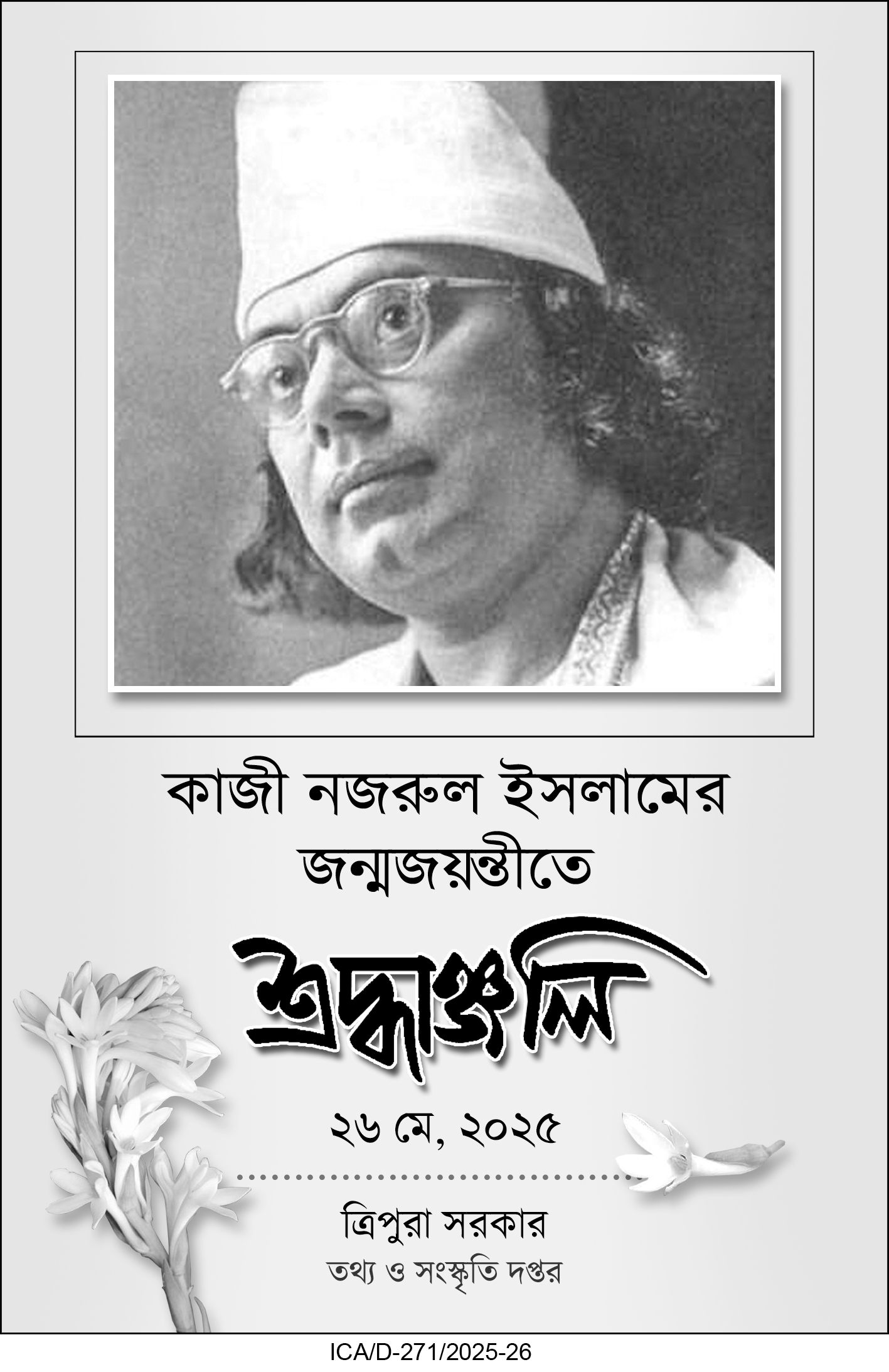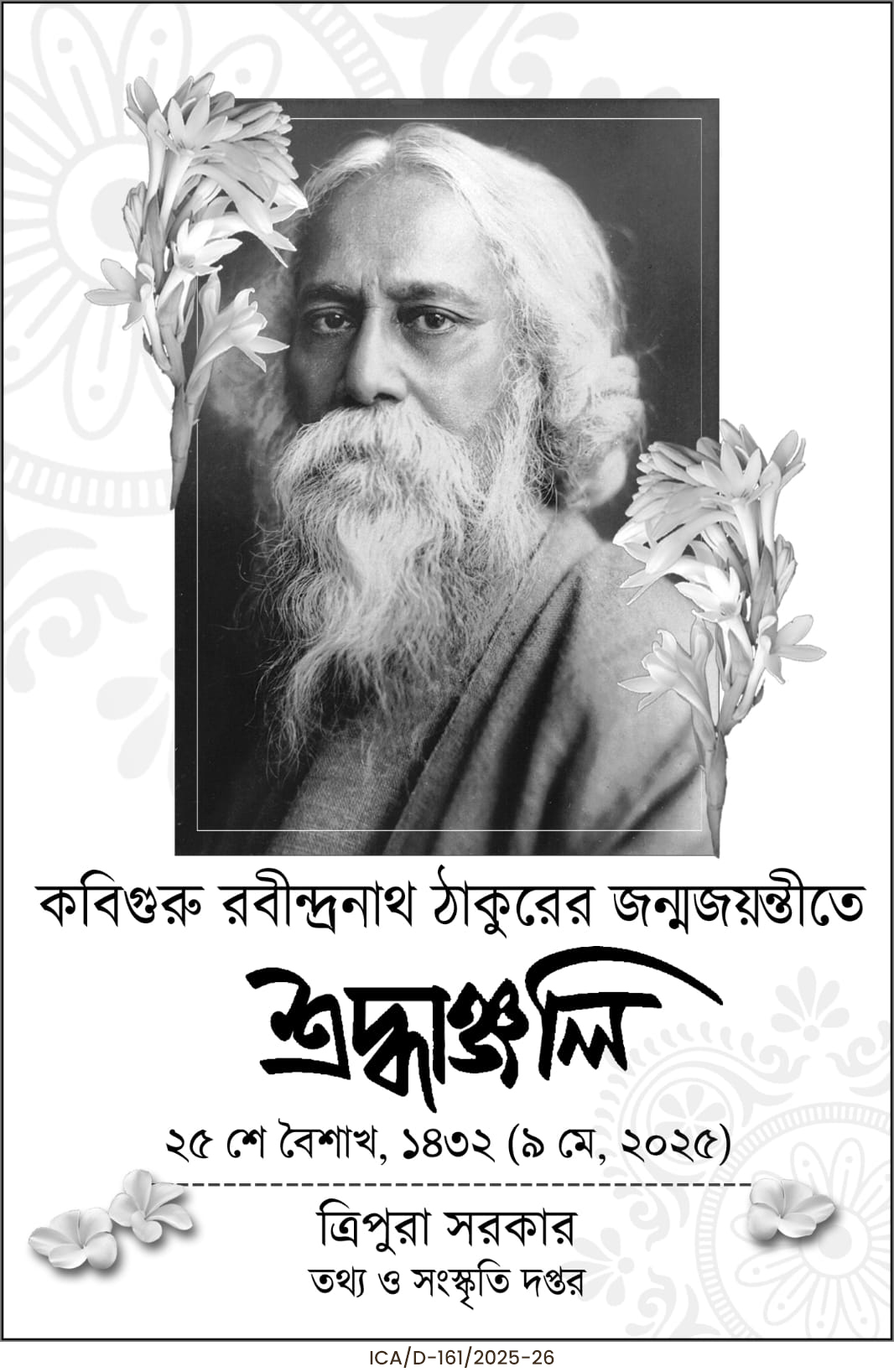The Forgotten Tail: The Vanished Plane Wreck from MBB College
Sometimes, memories return like fragments of dreams—blurred, fleeting, half-luminous. Among the countless stories whispered through the corridors of MBB College, Agartala’s oldest seat of higher learinging, one stood apart—part mystery, part legend. For decades, students and townsfolk alike remembered an odd sight within the campus: the tail section of an old airplane, resting quietly beneath a tree.
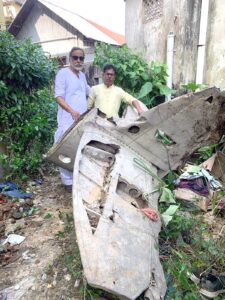
It was a strange thing to find in an academic institution. Yet there it was—seen by thousands of MBBians and passers-by, standing like a silent relic of some forgotten skyward tragedy.
The Strange Relic in the MBB Complex
In the early 1960s, it stood at the approach to the college from the lakeside, just as the path rose up the tilla (hillock). To the right, amid the rustle of trees and the faint hum of student chatter, you could see it—a gleaming metallic tailpiece, unmistakably part of an aircraft.
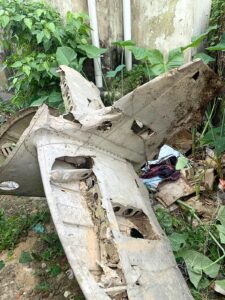
Back then, a small industrial complex stood nearby, its offices built of rounded aluminium—now replaced by residential quarters. But by the mid-1960s, the mysterious relic had changed places. Moved—perhaps spirited away by curious students—it found a new resting place under a large tree in front of the old Hostel No. 2.
For over two decades, it became a fixture of college life. Hostel boarders sat on it, leaned against it, or posed for photographs without ever knowing its story. Then, sometime in the late 1980s, it vanished—just as quietly as it had appeared. No one saw it being taken away. No one knew where it went.
The Search for the Lost Plane
Years later, while compiling a record of plane crashes in Tripura, this writer stumbled upon the legend once again. Conversations with old professors, retired staff, and elderly alumni yielded memories but no explanations. Everyone recalled seeing the plane part; no one knew how it arrived at MBB College—or where it had gone.
The puzzle grew deeper when records revealed that Tripura had witnessed at least ten plane crashes since 1943. With the relic gone, identifying which wreck it came from seemed impossible.
And then, one day, it resurfaced—quite literally from the dust of time.
The Discovery Behind Aneek Club
The missing tail was found behind a private house near Aneek Club in Shibnagar, dumped, rusting, and forgotten. The rediscovery came through the perseverance of Tinku Saha, an MBB College alumnus and aviation enthusiast. After reading about Tripura’s air tragedies, Saha began his own amateur investigation—and succeeded where many had failed.
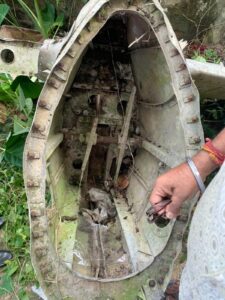
When contacted, Captain Partha Bhoumik, Tripura’s first commercial pilot and one of the most respected aviation professionals from the state, examined photographs of the relic with keen interest. With over twenty years of flying experience—both in the skies of India and abroad—Captain Bhoumik’s expertise gave new meaning to the discovery.
“At first glance,” he explained, “it appears to be a tail section comprising the stabilizer, rudder, and elevator. The construction and rivet patterns suggest it could possibly be a cargo or small passenger plane used widely in India during the 1950s.”
He added that such aircraft were common in the fleets. Captain Bhoumik said, “usually except enemy aircrafts, no other parts of wreckage of any air crash is officially displayed for public view. So it is highly unlikely that it was brought in MBB College complex by the government or any official entity”., Besides, he added, “ all air craft wreckage after crash are preserved or even reassembled as far as possible for investigation and understanding various factors like impact, fire temperature, height in which the accident took place frame velocity impact etc. They are also kept for future students of aviation matters”.
“In that sense it is, indeed, intriguing that the wreckage was left out and brought to the MBB College complex”, he said.
“What’s fascinating,” Captain Bhoumik noted, “is how this piece of aviation history lay hidden for decades in plain sight. These aircraft were legends of their time—they flew through monsoons, across treacherous hill routes, and connected the Northeast to the rest of India when aviation was still a frontier adventure- despite the fact during that time no computer or modern day aviation support systems and technology were there. During those days neither there were all those voice recorders in the cockpit nor there were the today’s sophisticated landing supports. Those days pilots used to VFR which means they had to rely on visual understanding of the land for touch down”
His words carried both nostalgia and reverence—a pilot’s deep respect for the machines that once defined human courage in the skies.
Linking the Clues to Agartala’s Forgotten Air Disasters
The logical trail led back to Agartala Airport—now known as MBB Airport—which had seen five crashes between 1943 and 1970.
The earliest recorded incident dates to March 25, 1943, when a Douglas DC-3 of the Royal Air Force crashed shortly after take-off during World War II. All three crew members reportedly parachuted to safety.
Then, in 1952, two back-to-back tragedies struck: On April 10, a Douglas C-47 Skytrainer of Kalinga Airlines crashed near Agartala, killing all four crew members after an engine failed during final approach. Just months later, on November 12, a Bharat Airways cargo aircraft went down near the same airport. The three-man crew miraculously survived with serious injuries.
Four years later, on October 19, 1956, a Douglas DC-3 cargo plane of Indian Airlines crashed in bad weather after failing to locate the runway on repeated landing attempts. All three aboard were killed.
The next crash came much later—on June 7, 1970—when an Indian Airlines Fokker Friendship F27 from Kolkata crash-landed at Agartala. All 39 passengers and crew survived, though the aircraft was damaged beyond repair.
Which Wreck Did It Belong To?
Given that students had already seen the plane tail at MBB College in the early 1960s—well before the 1970 Fokker accident—the wreckage must have come from one of the earlier four crashes.
The 1943 Royal Air Force plane could be ruled out, as MBB College was established later. That leaves three plausible sources: Kalinga Airlines DC-3 (1952), Bharat Airways Cargo (1952), Indian Airlines DC-3 (1956).
Transporting debris from distant crash sites like Khowai or Jampui Hills or Gandacherra or from inaccessible Dhumacherra was impractical in those days due to poor roads. Hence, the likeliest explanation is that the tail came from one of the Agartala Airport crashes between 1952 and 1956.
As Captain Bhoumik observed thoughtfully, “Every piece of wreckage tells a story of flight—of risk, of technology, and of the people who believed in the sky. This fragment, lying for years in a college ground, unknowingly became a classroom of history.”
Yet, we cannot say for sure. We cannot convincingly and with certainty say from which crash it came. Nevertheless, Captain Bhoumik maintains that if given to the experts in the related field of the aviation industries, they still can confirm as to which type of aircraft it was , when it was made, and what were its other characters. Right at this moment we of course do not have any one near us to help.
Restoring a Piece of History
After the rediscovery, the matter was brought to the attention of Agartala Municipal Corporation Mayor Dipak Majumdar and members of the MBB College Alumni Association. They have been requested to salvage and preserve the aircraft part—perhaps to be displayed publicly as a memorial to Tripura’s forgotten aviation history.
Captain Bhoumik however made it clear that the wreckage cannot be encouraged to be officially placed near any airport as it would in a sense be a ‘discouraging scene’ for air travels.
For now, the relic rests quietly once again—weathered but intact, its rivets glinting faintly under the sun. It carries no nameplate, no serial number, no trace of its origin—only the whispers of skies it once touched and a generation of students who unknowingly shared its silent company.
This feature is part of the Tripura Air Crash Series.
With gratitude to Tinku Saha for rediscovering the wreckage and to Captain Partha Bhoumik for his expert insights.
(Also Published in the Tripura Times on Nov 08 2025)
|Also Read : The Burning Skies of Tripura : Air Crash Series |
|Also Read : Wings of Tragedy: The Forgotten Plane Crashes in Agartala Airport |
|Also Read : No one in the country believes it was pilot’s fault: Supreme Court on Ahmedabad Air India crash |




